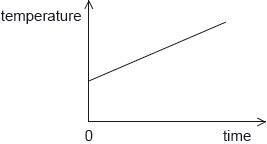| Date | November 2021 | Marks available | 1 | Reference code | 21N.2.HL.TZ0.6 |
| Level | Higher level | Paper | Paper 2 | Time zone | 0 - no time zone |
| Command term | Show that | Question number | 6 | Adapted from | N/A |
Question
Titan is a moon of Saturn. The Titan-Sun distance is 9.3 times greater than the Earth-Sun distance.
The molar mass of nitrogen is 28 g mol−1.
Show that the intensity of the solar radiation at the location of Titan is 16 W m−2.
Titan has an atmosphere of nitrogen. The albedo of the atmosphere is 0.22. The surface of Titan may be assumed to be a black body. Explain why the average intensity of solar radiation absorbed by the whole surface of Titan is 3.1 W m−2.
Show that the equilibrium surface temperature of Titan is about 90 K.
The mass of Titan is 0.025 times the mass of the Earth and its radius is 0.404 times the radius of the Earth. The escape speed from Earth is 11.2 km s−1. Show that the escape speed from Titan is 2.8 km s−1.
The orbital radius of Titan around Saturn is and the period of revolution is .
Show that where is the mass of Saturn.
The orbital radius of Titan around Saturn is 1.2 × 109 m and the orbital period is 15.9 days. Estimate the mass of Saturn.
Show that the mass of a nitrogen molecule is 4.7 × 10−26 kg.
Estimate the root mean square speed of nitrogen molecules in the Titan atmosphere. Assume an atmosphere temperature of 90 K.
Discuss, by reference to the answer in (b), whether it is likely that Titan will lose its atmosphere of nitrogen.
Markscheme
incident intensity OR «W m−2» ✓
Allow the use of 1400 for the solar constant.
exposed surface is ¼ of the total surface ✓
absorbed intensity = (1−0.22) × incident intensity ✓
0.78 × 0.25 × 15.7 OR 3.07 «W m−2» ✓
Allow 3.06 from rounding and 3.12 if they use 16 W m−2.
σT 4 = 3.07
OR
T = 86 «K» ✓
OR
«km s−1» ✓
correct equating of gravitational force / acceleration to centripetal force / acceleration ✓
correct rearrangement to reach the expression given ✓
Allow use of for MP1.
«s» ✓
«kg» ✓
Award [2] marks for a bald correct answer.
Allow ECF from MP1.
OR
«kg» ✓
✓
«ms−1» ✓
Award [2] marks for a bald correct answer.
Allow 282 from a rounded mass.
no, molecular speeds much less than escape speed ✓
Allow ECF from incorrect (d)(ii).


